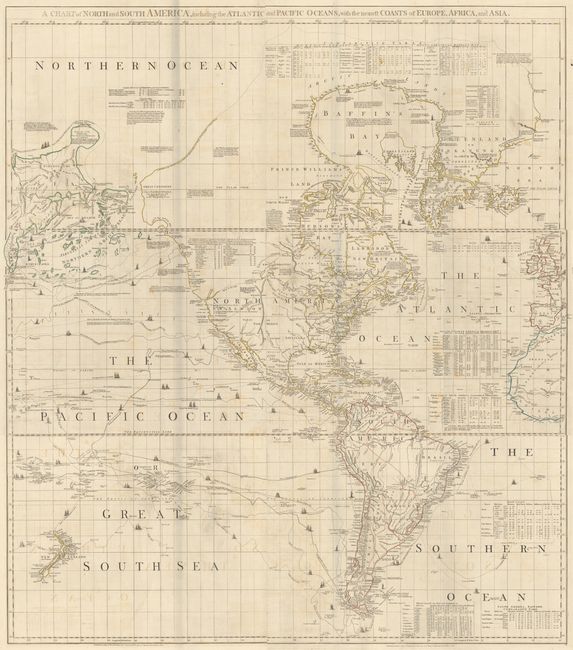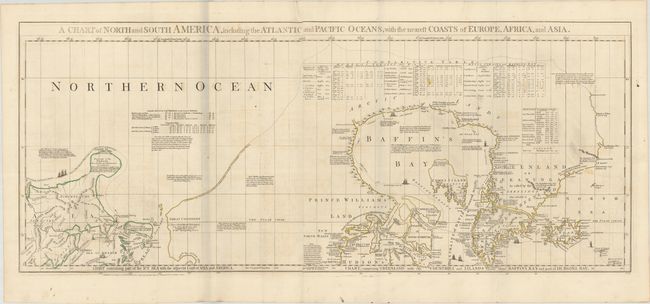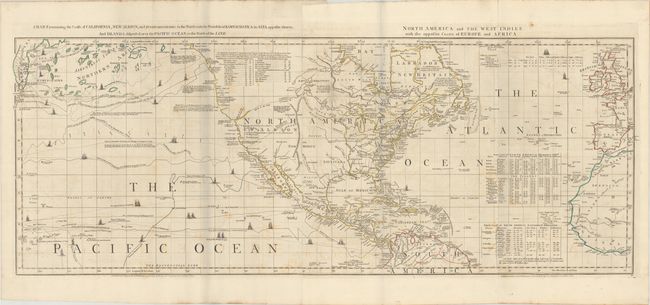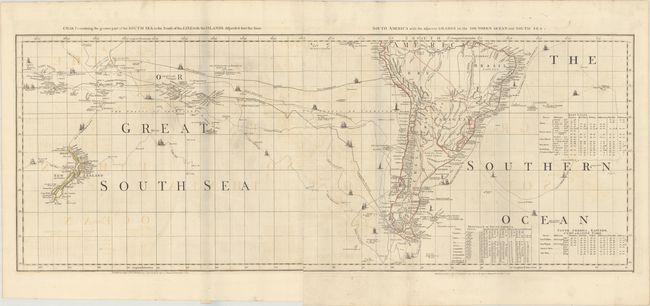Catalog Archive


Auction 189, Lot 71
One of the Most Important American Maps of the Latter Part of the Eighteenth Century
"[On 6 Sheets] A Chart of North and South America, Including the Atlantic and Pacific Oceans, with the Nearest Coasts of Europe, Africa, and Asia", Jefferys/Sayer & Bennett
Subject: Western Hemisphere - America
Period: 1775 (dated)
Publication: The American Atlas
Color: Hand Color
Size:
44 x 18 inches
111.8 x 45.7 cm
Download High Resolution Image
(or just click on image to launch the Zoom viewer)
(or just click on image to launch the Zoom viewer)



